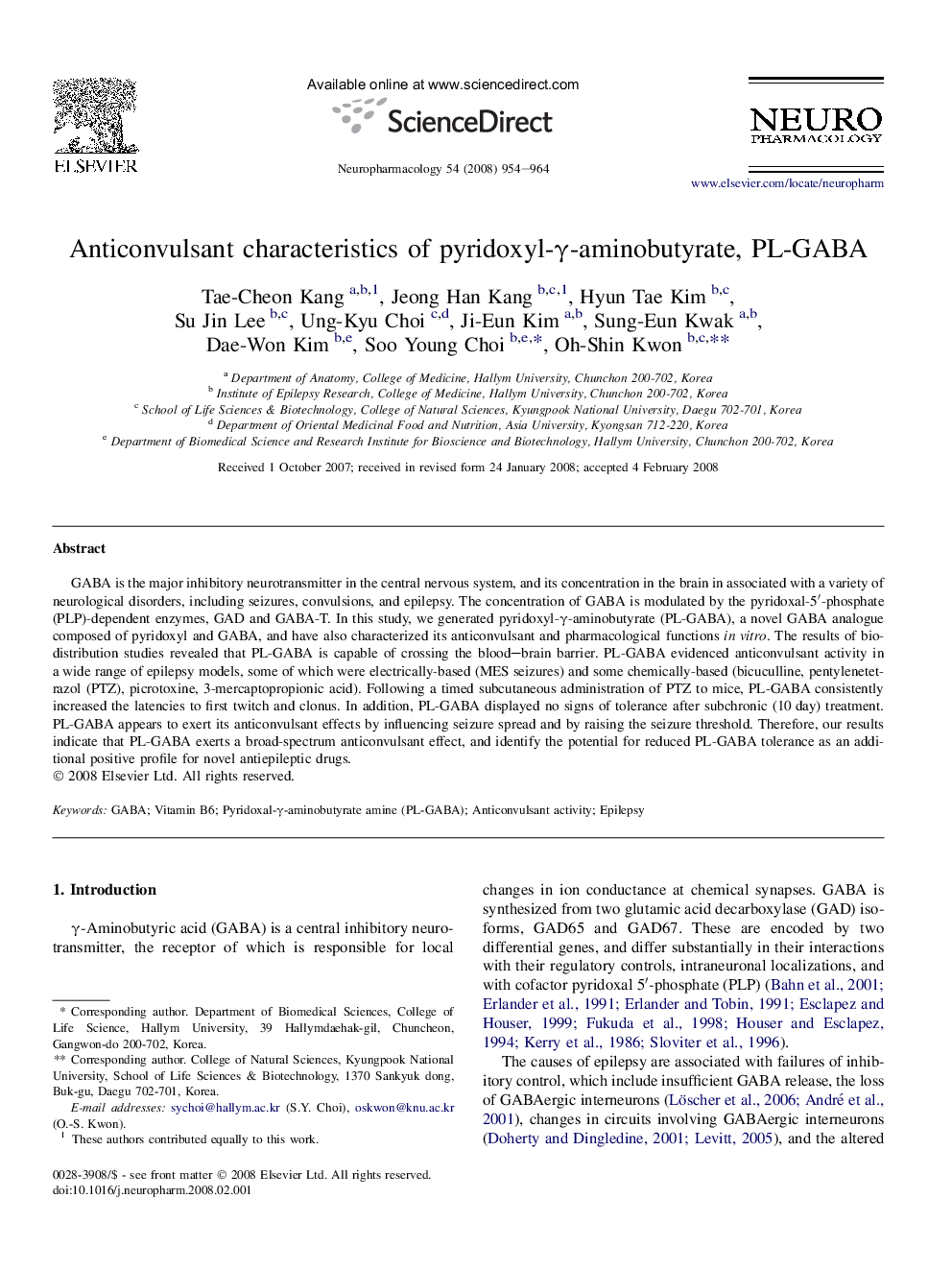| Article ID | Journal | Published Year | Pages | File Type |
|---|---|---|---|---|
| 2494938 | Neuropharmacology | 2008 | 11 Pages |
GABA is the major inhibitory neurotransmitter in the central nervous system, and its concentration in the brain in associated with a variety of neurological disorders, including seizures, convulsions, and epilepsy. The concentration of GABA is modulated by the pyridoxal-5′-phosphate (PLP)-dependent enzymes, GAD and GABA-T. In this study, we generated pyridoxyl-γ-aminobutyrate (PL-GABA), a novel GABA analogue composed of pyridoxyl and GABA, and have also characterized its anticonvulsant and pharmacological functions in vitro. The results of biodistribution studies revealed that PL-GABA is capable of crossing the blood–brain barrier. PL-GABA evidenced anticonvulsant activity in a wide range of epilepsy models, some of which were electrically-based (MES seizures) and some chemically-based (bicuculline, pentylenetetrazol (PTZ), picrotoxine, 3-mercaptopropionic acid). Following a timed subcutaneous administration of PTZ to mice, PL-GABA consistently increased the latencies to first twitch and clonus. In addition, PL-GABA displayed no signs of tolerance after subchronic (10 day) treatment. PL-GABA appears to exert its anticonvulsant effects by influencing seizure spread and by raising the seizure threshold. Therefore, our results indicate that PL-GABA exerts a broad-spectrum anticonvulsant effect, and identify the potential for reduced PL-GABA tolerance as an additional positive profile for novel antiepileptic drugs.
